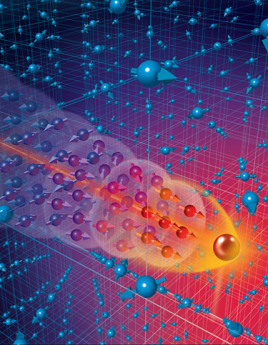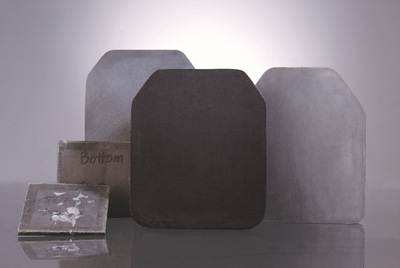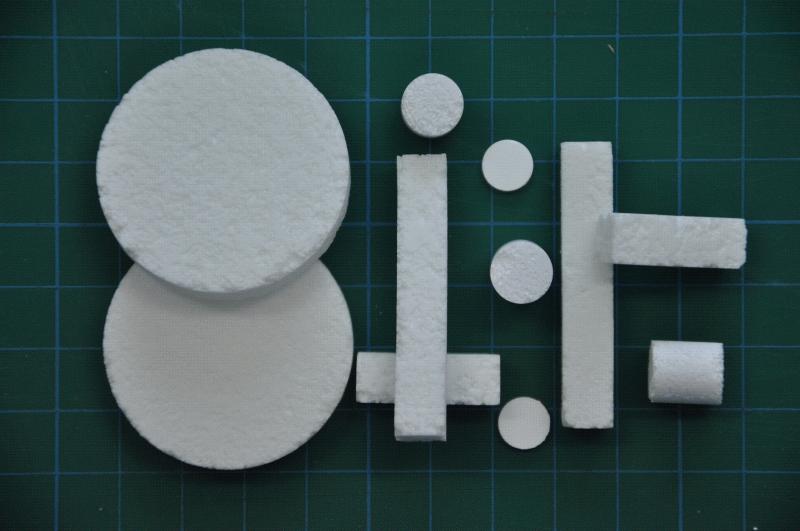1. Unbalanced effect
The previous cases (mentioned in the third of superconducting ceramics) are all carried out in an equilibrium state or an approximate equilibrium state. The distribution of particle velocity and momentum is determined by temperature. For non-equilibrium states, they have nothing to do with temperature, but with the distribution of particles according to momentum.
There are several methods for obtaining the unbalanced state. Optical excitation: It is to irradiate superconducting samples with light (including magnetic field and laser, etc.); neutron beam excitation, unbalanced electron excitation and electric field breakdown. When a superconductor is subjected to an electromagnetic field whose frequency greatly exceeds its energy gap, in addition to causing the formation of quasi-particles, additional quasi-particles will also be produced. This superconducting state is very sensitive to the value and form of the distribution function of the process quasi-particles, so that it has a series of essential characteristics. For example, when a superconductor undergoes a non-equilibrium state, the transition from a superconducting state to a normally-conducting state is not a jump, but a gentle one. Under the particle anti-distribution bar, the appearance of the superconducting state is obtained when two electrons repel each other to form a combined state. However, under equilibrium conditions, electrons form electron pairs by interacting with phonons to generate attraction. In addition, under the condition of particle anti-distribution, the superconducting energy gap will be greater than the maximum value of phonon energy. There is a non-attenuated current in the system, which is completely paramagnetic, and the sign of the current is opposite to the sign of the current under the balancer. Therefore, in this state, the superconductor will not exhibit the Meissner effect, but the magnetic field can enter the sample and other peculiar properties. It is precisely because of this peculiar performance that leads to the result of theoretical analysis that makes it possible for Tc to reach 1000K. Even ignoring the anti-distribution of particles, it is possible to obtain a high Tc temperature for a general non-equilibrium state.
There are many superconductivity theories, not to introduce them one by one. Up to now, it has not been able to make a satisfactory explanation for superconductivity and so on.

2. The nature and testing of superconductors
There are many properties of superconductors, as shown in the table.
Electrical properties of superconducting state
|
property |
Features |
|
Fully conductive |
The DC resistance is zero, but the AC resistance is not zero. Carriers are pairs of superconducting electrons. To be exact, the DC resistance is infinitely close to zero. |
|
Resistivity |
Approaching zero |
|
Thermoelectromotive force |
Approaching zero |
|
Current can destroy the superconducting state |
When the current density exceeds the critical value Jc, the superconductor changes from the superconducting state to the normally conducting state. The essence is the destruction of the superconducting state by the magnetic field generated by the current. This phenomenon is an important physical basis of superconductivity engineering. |
|
Current trending effect |
Superconducting current can only flow into a thin layer of deep surface along the superconducting surface |
Optical properties of superconducting state
|
property |
Features |
|
General optical properties |
No change |
|
Reflectivity |
No transformation occurs, photons with energy lower than the energy gap cannot be absorbed |
Magnetic properties of superconducting state
|
property |
Features |
|
Fully diamagnetic |
An external magnetic field cannot enter the superconductor under normal circumstances, but can only penetrate into the deep surface layer of λL |
|
The magnetic field can destroy the superconducting state |
When the magnetic field strength exceeds the critical value Hc, the superconductor changes from a superconducting state to a normal conducting state. This phenomenon is also an important physical basis of superconducting electronics (or superconducting microelectronics) |
|
There is a mixed state |
The state that exists between the two critical magnetic fields Hc1 and Hc2 of the second type of superconductor. It has the properties of complete conductivity, but does not have the properties of complete diamagnetism. |
|
There is an intermediate state |
The intermediate state is a state in which the superconducting state and the normal conducting state alternately exist in the superconductor. This state is sometimes called the intermediate state. |
Thermal properties of superconducting state
|
property |
Features |
|
New phase transition effect |
When the superconductor’s transition from a superconducting state to a normally conducting state (or vice versa) is accompanied by endothermic or exothermic heat |
|
Latent heat |
When H>0, latent heat occurs during the phase change, and when H=0, no latent heat occurs during the phase change |
|
Specific heat |
Abnormal specific heat, discontinuity when T=Tc, and mutation effect |
|
Temperature destroys superconductivity |
When the temperature exceeds the critical temperature Tc, the superconductor changes from a superconducting state to a normally conducting state, and vice versa. This is also an important physical basis for superconductivity |
|
Thermal conductivity |
With discontinuity in the magnetic field, the thermal conductivity of the general superconducting state will become lower |
Other properties of superconductors
|
|
Features |
|
Crystal structure |
constant |
|
Shape size |
constant |
|
elasticity |
Want to change |
|
Absorption of electron beam |
constant |
|
Energy gap |
Determined by the Fermi gas, in the electron energy spectrum of the superconductor, there can be no gaps in the electron energy |
|
Isotope effect |
The critical temperature Tc of a superconductor is related to the isotope mass M of the superconductor, and Tc decreases as the temperature increases |
|
Tunnel effect |
It is divided into superconducting electron tunneling effect and normal conduction quasi-electron tunneling effect, which is an important physical effect on the basis of superconducting electrons. |
Declaration: This article is provided by CERADIR™ users or obtained from Internet, the content does not represent the position of CERADIR™. We are not responsible for the authenticity/accuracy of the article, especially the effects of the products concerned. This article is for study only, it does not constitute any investment or application advice. For reprinting, please contact the original author. If it involves the copyright and/or other issues, please contact us and we will deal with it asap! CERADIR™ has the interpretation of this declaration.







